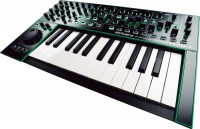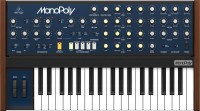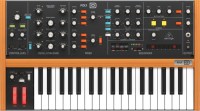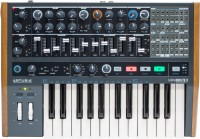Roland SYSTEM-1
 | Outdated Product $684.70 Type: analogue synthesizer; Number of keys: 25; Size: full size; Mechanics: active; Rigidity: unweighted; Polyphony (voices): 4; Octave shift; Arpeggiator; Reverberation; MIDI in; USB B; MIDI in; headphones; PSU; |
Roland SYSTEM-1 | |||||||||||||||||||||||||||||||||||||||||||||||||||||||||||||||||||||||||||||
|
| ||||||||||||||||||||||||||||||||||||||||||||||||||||||||||||||||||||||||||||
Before buying always check characteristics and configuration of product with online store manager
Catalog Roland 2024 - new products, best sales and most actual models Roland.
A new bike for the modern musician
The iconic Japanese company Roland has long lived in the past, but in 2014 took a bold step by releasing a new line of AIRA tools. The idea was to take the best of both worlds (analogue and digital) and make it as easy as possible to switch between instruments so that the entire AIRA line is perceived as a single instrument. A kind of Voltron robot from the world of synthesizers. But first things first.
Two synths in one
Let's start with sound. Roland did not follow the beaten path and did not start making another analogue additive synthesizer with a pair of conventional oscillators. Instead, they made all-digital machines that mimic the sound of analogue synthesizers. This technology was called Analogue Circuit Behavior, and in addition to being relatively cheap, it gave the SYSTEM-1 one great feature. Namely, the ability to load digital versions of other Roland synthesizers into it without any need to connect a computer. The end result is a sonic chameleon that can deliver System 700-style "warm analogue sound" and then switch to the legendary Roland SH101 basses. Even better, the SYSTEM-1 is able to store both the main and secondary synthesizers in memory and switch between them on the fly, without having to turn the instrument on and off.
Maximum control
Another feature is the prohibitive number of controls for such a compact size. It's not for nothing that Roland boasts that they managed to do without built-in menus, placing a total of 73 buttons, faders and control knobs on the panel. So, SYSTEM-1 contains the following blocks: a pair of conventional oscillators with flexible cross modulation settings plus a sub-oscillator, plus a noise oscillator source, a mixer, a pair of filters, an amplifier block, three envelope generators (for oscillators, a filter and an amplifier), an LFO with as many as six parameters controls and built-in effects unit. And don't forget the separate effects block and the Scatter section, which makes it easy to turn sequences of notes in the arpeggiator into strange and unusual sequences that would be difficult to play by hand.
Easy synchronization
Now about switching with other instruments. If you have other babies from the AIRA line (such as a drum machine or a remake of the iconic Roland TB-303), all you need to do is connect with regular MIDI cables. And no drifting or fiddling with master clock sync. It's no surprise that Aira has become a new classic, finding a place in the studios of big-name house and techno producers like Kink and DJ Pierre. Given the set of such skills, a synthesizer can even be forgiven for a keyboard without velocity and aftertouch support. Although, it would be better with them.

















